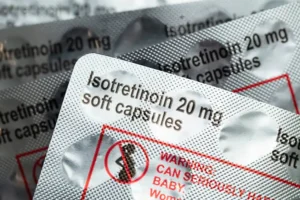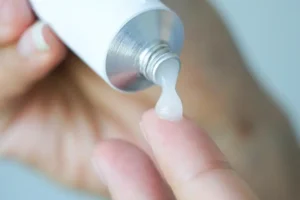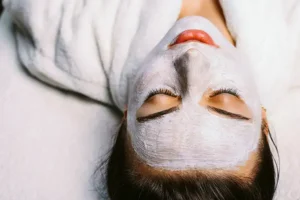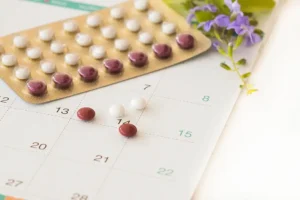If you’ve ever had a pimple that healed but left behind a stubborn dark mark, that’s post-inflammatory hyperpigmentation, or PIH. It’s one of the most common lingering effects of acne and can take years to fade if left untreated.
But the good news? With the right ingredients and consistent care, PIH can be significantly lightened and prevented from returning.
What Is PIH?
Post-inflammatory hyperpigmentation is the skin’s response to inflammation. When a pimple, scrape, or irritation heals, the body sometimes overproduces melanin, the pigment that gives skin its color. This creates flat brown, gray, or dark spots that remain after acne clears.
Unlike scars, PIH doesn’t change the texture of your skin — only the color. It’s especially common in people with medium to deep skin tones, but lighter skin can develop it too after sun exposure or aggressive acne treatments.
Why It Happens
Inflammation is the main trigger. When acne becomes red, swollen, or irritated, melanocytes (the pigment-producing cells in the skin) release excess melanin into surrounding tissue. This pigment then settles unevenly, leaving behind dark marks even after the breakout is gone.
PIH can worsen if you:
-
Pick, squeeze, or pop pimples.
-
Skip sunscreen, allowing UV rays to darken marks.
-
Use harsh or irritating products that prolong inflammation.
-
Overuse strong actives like retinoids or acids without barrier support.
How to Treat PIH at Home
PIH fades naturally over time, but the process can take several months. You can safely speed it up with consistent use of brightening and anti-inflammatory ingredients that regulate melanin production and increase cell turnover.
1. Azelaic Acid (10–20%)
One of the best multitaskers for all skin tones. It brightens, calms redness, and helps fade both brown and red marks without irritation.
2. Niacinamide (2–5%)
Reduces pigment transfer between cells and supports the skin barrier. Works well layered with azelaic acid or retinoids.
3. Vitamin C (L-ascorbic acid or derivatives)
A powerful antioxidant that fades dark spots and boosts collagen. Start with lower concentrations (10–15%) if you have sensitive skin.
4. Retinoids (Retinol, Adapalene, Tretinoin)
Increase cell turnover so new, even-toned skin replaces discolored areas faster. Use at night and combine with moisturizer to minimize dryness.
5. Gentle Exfoliating Acids
Lactic or mandelic acid once or twice a week helps remove surface pigment and improve radiance.
6. Daily Sunscreen
SPF 30 or higher is non-negotiable. Without it, every other step is wasted — UV light darkens existing pigment and triggers new spots.
Example Simple Routine:
AM: Gentle cleanser → Niacinamide serum → Vitamin C → Moisturizer → SPF
PM: Cleanser → Azelaic acid or retinoid → Moisturizer
Patience is key. PIH takes time to fade because melanin is stored deep in the epidermis. Even with perfect care, expect visible improvement in 8–12 weeks.
In-Office Treatments for Stubborn PIH
For marks that don’t respond to topical treatments, dermatologists can offer targeted therapies that reach deeper pigment.
1. Chemical Peels
Mild peels with glycolic, lactic, or mandelic acid exfoliate surface pigment and promote new skin growth. Safe for most skin tones when performed by an experienced professional.
2. Microneedling
Creates micro-injuries that trigger collagen production and accelerate cell renewal. Works best for mixed pigmentation and mild texture issues.
3. Laser Treatments
Selective pigment-targeting lasers like Nd:YAG or fractional lasers can break up deep pigment deposits. However, not all lasers are safe for darker skin tones, so choose a board-certified dermatologist familiar with ethnic skin.
4. Prescription Treatments
Dermatologists may prescribe hydroquinone (up to 4%), often in cycles, combined with tretinoin or mild corticosteroids for stronger fading. It should always be used under medical supervision.
How to Prevent New Dark Spots
-
Don’t pop or pick at pimples — it drives pigment deeper.
-
Always wear SPF, even indoors.
-
Keep your skincare barrier healthy with ceramides and antioxidants.
-
Avoid harsh scrubs, alcohol-based toners, or bleaching creams.
-
Introduce brightening actives slowly to avoid irritation.
Expert FAQ About Post-Inflammatory Hyperpigmentation
How long does PIH last?
Mild marks may fade in 3–6 months, while deeper ones can take a year. Consistent sunscreen use and brightening actives help speed it up.
Can PIH go away on its own?
Yes, but very slowly. Active ingredients like retinoids, azelaic acid, and vitamin C can significantly reduce healing time.
Is PIH permanent?
No, PIH affects only the upper skin layers. Once those cells renew, the pigment lightens naturally with proper care.
Can exfoliating too often make PIH worse?
Yes. Over-exfoliation irritates the skin and can trigger more pigmentation. Use mild acids once or twice a week at most.
Which ingredients should I avoid for PIH?
Avoid harsh scrubs, undiluted lemon juice, high-strength hydroquinone without supervision, and anything that burns or stings your skin.
Can sunscreen really help PIH fade?
Absolutely. Sunlight makes existing dark spots darker. Daily SPF is the single most effective step to prevent and fade pigmentation.
Post-inflammatory hyperpigmentation is not a permanent condition. It simply shows that your skin is recovering after inflammation. With the right mix of brightening ingredients, consistent care, and sun protection, these dark spots can fade safely over time.





